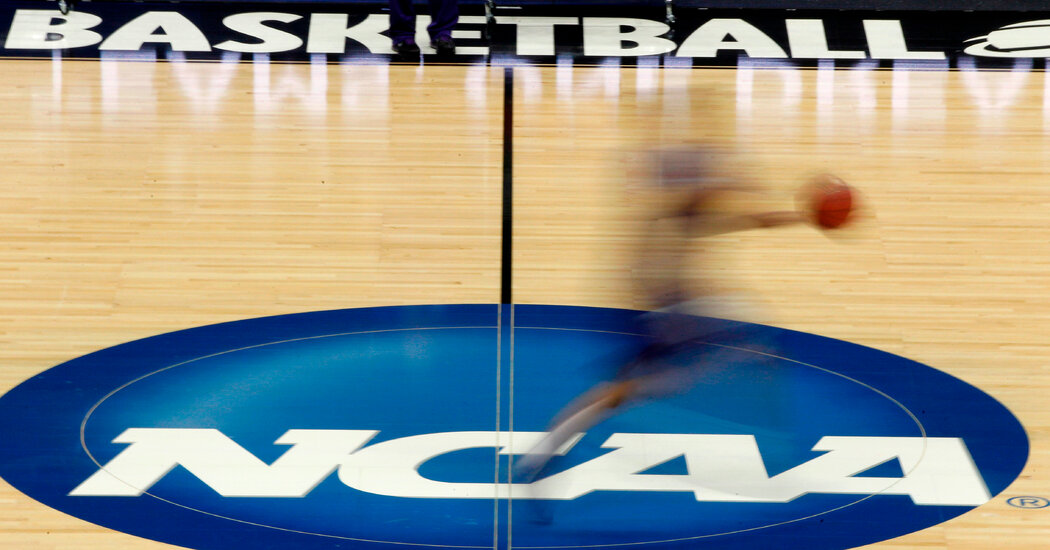
INDIANAPOLIS — N.C.A.A. member schools and conferences voted Thursday to adopt a new, stripped-down constitution, the first step in decentralizing an organization that faces increasing challenges to its relevancy as the chief authority in college sports.
But the debate over the association’s passage of the new charter, which will empower schools and conferences, hinted at the increasingly stark divide between the mission and financial might of those thousands of varied institutions — from a football powerhouse like the national champion Georgia and nonscholarship athletes at places like Grinnell College.
That gap promises to be highlighted as the N.C.A.A.’s three divisions hash out details of how they will overhaul themselves in the coming months.
It is then, particularly at Division I, when the richest schools — like Texas and Ohio State, which have athletic budgets upward of $200 million — and their conferences will push for greater influence in how they operate, unburdened by the central governance of the N.C.A.A.
The remade constitution easily passed the two-thirds threshold required for approval, garnering 80 percent of the 1,016 votes by conferences and member schools. It will go into effect on Aug. 1.
The new charter was a response to a particularly tumultuous 2021 that, amid the pandemic, included the laying bare of gender inequities in the Division I men’s and women’s basketball tournaments, the enactment of state legislation that allowed athletes to cash in on their fame, and Congressional finger-wagging over what was wrong with college sports.
The most jarring moment, though, came last June when the Supreme Court, in deciding a case that cleared the way for payments and benefits related to education, all but invited a direct challenge to the N.C.A.A.’s ban on paying players directly. Justice Brett M. Kavanaugh took aim at the N.C.A.A., suggesting that the organization was violating antitrust rules.
N.C.A.A. President Mark Emmert, in a speech Thursday given remotely because he said he had been restricted by coronavirus rules, portrayed the new charter as less a constitution than a declaration of independence from a way of doing business that didn’t work anymore. The last year or so made it clear, he said, that “if we don’t step up to the challenge now in this big moment, others are willing to do that,” referring to courts and legislative bodies.
The new constitution will replace the current edition — but notably not the voluminous 463-page Division I rule book.Its goal, Emmert said, was to distill the charter down to the essence of what college sports should strive for: diversity, inclusiveness and integrity, and taking care of athletes’ physical and mental health. It also maintains that college athletes should not be considered employees, something that would strike at the heart of the entire enterprise.
The new constitution was supported by the N.C.A.A. Board of Governors, the 25-person committee that charts the direction of the organization.
That committee took a step on Wednesday night to update its policy on transgender athletes, who will be required to undergo testosterone testing, beginning with the winter sports championships that start in March. The move is intended to put the N.C.A.A. in line with the national federations (or world federations) that set standards for acceptable testosterone levels in their sports in the United States. Previously, the N.C.A.A. required only that transgender women be on testosterone-suppressing treatment for one calendar year before competing in women’s athletics.
An N.C.A.A. spokeswoman said the organization did not know how many athletes the new rules would affect.
The issue has received attention recently with the performance of Lia Thomas, a swimmer at the University of Pennsylvania, who has turned in the top times in the country this season in the women’s 200- and 500-meter freestyle after competing previously for the school’s men’s team.
U.S.A. Swimming said in a statement that it was working on new policies with the sport’s international federation, FINA, and expected new guidelines for elite competition “shortly.”
But most of the discussion among administrators at the five-day convention, which began Tuesday, centered around the new constitution, which was about one-third as thick as the existing one.
Robert M. Gates, the former U.S. defense secretary, knocked out the first draft of the new constitution in one weekend, hammering out 12-and-a-half double-spaced pages at his home in Washington State. (It eventually ballooned to 19 pages.)
That relative speed gave pause to some of the opponents, who had their voice heard Thursday during an open session before the vote.
George Bright, the athletic director at Elizabeth City State, a historically Black college in North Carolina, decried that the new constitution called for H.B.C.U.s to be represented on the Board of Governors — but as a nonvoting member. “When you marginalize the H.B.C.U. vote, you marginalize our opportunity,” he told a convention center and virtual audience, invoking separate-but-equal imagery.
Betsy Mitchell, the athletic director of Caltech and a former Olympic swimming medalist, decried the process as rushed and orchestrated by a small group. She called the vote a charade.
At its heart was a question: Who among its membership should now lead the N.C.A.A.?
Division I schools generated 96 percent of the $18.9 billion that college athletics raked in during the 2019 fiscal year, but those 358 schools are outnumbered more than 2-to-1 by the Division II and Division III schools, who combined also have far more athletes and have far different agendas than the widely known football and basketball powerhouses.
“We’re just the virtual kale on the Division I burger,” said Hiram Chodosh, the president of Claremont McKenna College in California, who noted that Division III carries the banner for the term student-athlete.
He noted wryly, with a wink to the college sports industry being built on the backs of unpaid athletes, that “without the rest of us, it may just start to look like a commercial enterprise.”
Still, there was enough in the proposal to draw the support of a majority of Division II and III schools.
The streamlined constitution would “untie some of the knots, if you want to call it that, that prohibit the divisions to do some of the things they want to do,” said Shane Lyons, the West Virginia athletic director, who serves on the Board of Governors and the Division I Board of Directors.
Any transformational changes, Lyons said, would begin to take shape in the coming weeks as the Division I, II and III committees began laying out how greater autonomy would look. The Division I committee will begin examining issues like enforcement, revenue distribution, recruiting calendars and anything else that might be laid out in the weighty rule book.
Julie Cromer, the athletic director at Ohio University and the committee co-chair with Southeastern Conference Commissioner Greg Sankey, said there are some on the committee who want to go through it with a scalpel. Others, she said, would prefer to toss it on a bonfire and start from scratch.
But within Division I, not everyone will have a voice on the committee charged with chartering a new future. There are 32 conferences — 11 of which will be left out.
Talya Minsberg and Alan Blinder contributed reporting.







